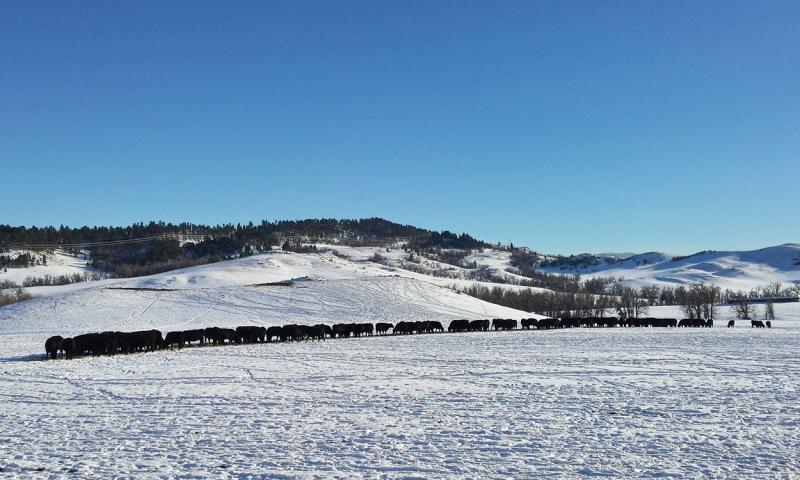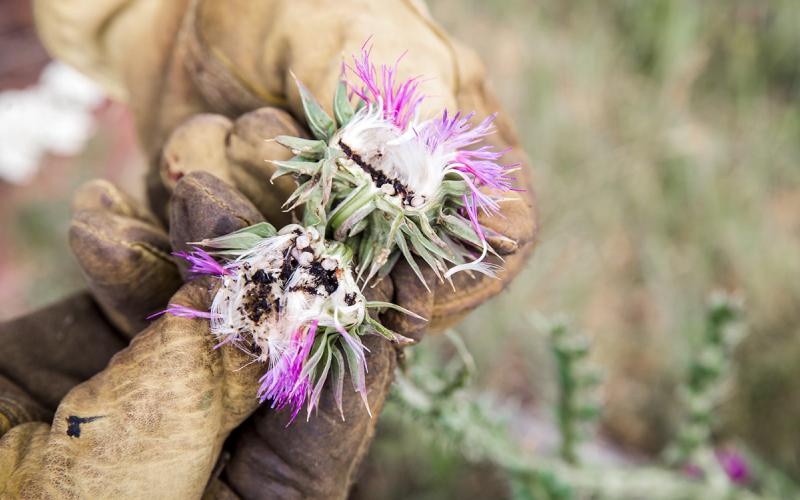
Grazing and mowing are both proven techniques for harvesting grassland biomass, and both have advantages and disadvantages in relation to timing, efficiency and input expenses. Swath grazing and bale grazing are harvest systems that mesh haying and grazing techniques. Generally, the objective is to reduce labor and equipment expenses associated with baling, transporting, storing and feeding hay by allowing livestock to consume the hay crop in the field.
Swath grazing utilizes common haying equipment. Instead of baling the hay swath, the swath remains in the field, where it cures, retaining its nutritional value. Managers then typically utilize temporary or movable fencing, such as electric poly wire, to allow livestock access to the feed during winter months. Livestock are not allowed access to the entire swath field, rather a pre-determined number of swaths are allocated for the length of the feeding session, which may range from one-half day to up to three days or more depending on the operation.
Bale grazing is similar to swath grazing in that the livestock consume the bale in the field. Managers utilizing this technique vary in their approach depending on the individual situation. Some bale grazers will leave the bales in the original field, with some opting to arrange the bales in such a manner to be able to efficiently incorporate temporary fences to allow access to one or more days of feed at a time. Others may choose to haul the bales to a pre-determined feeding location where the bales are then arranged for future feeding sessions.
Both swath grazing and bale grazing systems require additional management and labor associated with grazing the swath or bale. However, one could argue that it takes less time to move an electric fence than it does to start a tractor, get a bale, feed the cows, park the tractor, etc. Management of movable fence and access to water during winter months are challenges associated with both systems. While both systems can reduce typical equipment and labor expenses, livestock may not be as efficient in consuming the forage as they would otherwise be in a feeding situation. However, many swath and bale grazers associate the ‘waste’ with positive impacts to soils and nutrient cycling, including the manure deposited directly on the field saving expenses associated with artificial fertilizers or hauling manure from a livestock lot.
The Healthy Grasslands article series is provided by the South Dakota Grassland Coalition in partnership with SDSU Extension. Contributing editors: Alexander J. Smart, Peter J. Bauman and Joshua Lefers. © South Dakota Grassland Coalition 2017. For more information, view the full publication or visit the South Dakota Grassland Coalition website.


